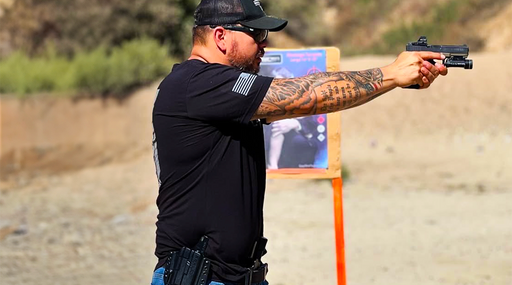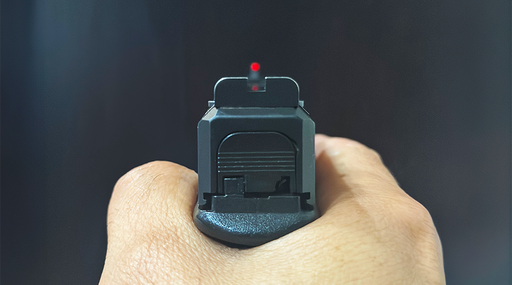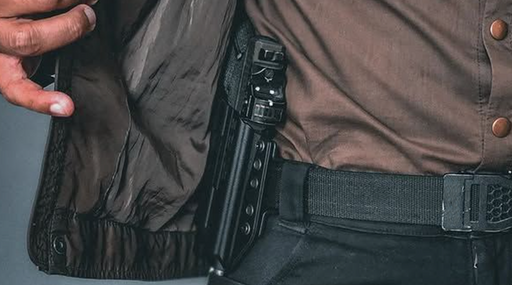When it comes to carrying a concealed handgun on the waistline, folks often refer to clock-based orientation. It’s a useful frame of reference, so long as we all agree on how that imaginary clock is situated on the body. With the navel representing 12:00, the center of the right waistline being 3:00, the spine 6:00, and the left waistline phoning in as 9:00, a discussion of where to carry concealed can begin.
In case it’s unclear, here are the choices In clock terms. AIWB means 12:00 to approximately 2:30 for right-handed people and 9:30 to 12:00 for southpaws. (Yes, anatomy experts, we do realize the actual appendix doesn’t roam around). Strong side carry implies the gun rides at 3:00, AKA the hip for right-handed people; 9:00 or the left hip for those of us with inky pinkies.
Notice we didn’t mention lumbar carry—the 3:30 to 8:30 region. That’s because, with few exceptions, it’s not a great idea. Security of the gun, printing under clothing, and speed of draw are almost always compromised with lumbar carry. If any part of the gun or a rigid holster covers the spine itself, lumbar carry also presents risk of a debilitating spinal injury if the wearer falls onto that part of his or her back.
With lumbar carry off the table, let’s examine the virtues and potential drawbacks of AIWB and strong side carry.
AIWB Carry
With the gun inside the waistband somewhere on the front of the body, AIWB carriers enjoy the following benefits:
- -Rapid access to the gun, even while seated in a vehicle
- -Maximum possible theft prevention, at least while holstered
- -Relatively easy concealment, with appropriate shirts
Potential drawbacks to AIWB include:
- -Inability to wear a tucked-in shirt as the outer garment
- -Protruding guts can create protruding (printing) grips
- -A short-barreled gun may be necessary to avoid painful gouging of the thigh while seated
The Bravo Concealment Torsion gun holster is an excellent example of an AIWB-friendly holster. It’s the one this writer uses most often.
Strong Side Carry
Strong side carry can be done inside the waistband (IWB) or outside (OWB). Either way, a strong-side concealment holster is generally designed to ride high and tight to the body. OWB strong side holsters may be canted backward a bit, in order to raise the muzzle height and reduce the possibility of the muzzle end sticking out from the bottom edge of a covering garment.
Strong side carriers enjoy:
- -The option to tuck a shirt in or not, though a jacket or other covering garment is required for OWB carry with a tucked-in shirt
- -A natural drawstroke that is close to or exactly the draw used in most formal range training
- -Less need to deal with issues related to the gun crowding the very personal space associated with appendix carry---especially an advantage for owners of dad-bod or mom- bod
- -The option to go OWB or IWB—though not with the same holster
Which is best?
Both appendix and strong side carry have great advantages. I feel that, thanks to the security of and rapid access to the gun, they represent the two best methods of concealment. For some people, which of the two methods they choose is just a matter of preference. For others, it’s a matter of necessity. Every person is uniquely shaped, with a body that may dictate which method of carry is practical. The only way to truly know is to try various methods, with various guns and holsters.
Many people would prefer to carry appendix, but a protruding grip prevents it. Some people have resolved this issue with inserting wedge shaped heel cups, found in the orthotics section of your local drugstore, to the bottom of the holster. Others choose a holster with an extension that presses the grip toward the body. Not long ago I listened to a video on the Bravo Concealment Instagram channel that seems to indicate such an extension may soon be available with Bravo Concealment gun holsters. Although I haven’t found this to be necessary, and love the minimalist but gun-protecting design of the Torsion, this new feature will surely make AIWB possible for some for whom it currently doesn’t work.
By the same token, strong side carry requires a close-fitting, body-conforming holster for most people to make it work. Generally, a high-riding holster is more concealable too as it’s less likely to allow the muzzle to show below the bottom hem of a shirt or jacket. The Bravo Concealment 3.0 fills the bill for many people who want to do strong side carry.
Be open to experimentation. Try out different holster and clothing combos in privacy, with an unloaded gun, before taking your show (well actually your not-a-show) on the road. Maybe even ask a trusted friend to observe you in your holster/clothing of choice and see if they can identify where the gun is without much effort. If they can’t, you’re probably on the right track.
Common Factors for Appendix and Strong Side Carry
Everyone who successfully carries in either of these great positions will have to cover these bases:
-Have a tight-enough waistband.
- Usually, this means wearing a solid gun belt, like the Bravo Concealment Cinturon. I have also carried AIWB while running using drawstring sweatpants or shorts, with a very taut drawstring.
-Figure out what garment types work for concealment.
- “Dressing around the gun” refers to adapting your attire to allow you to carry a gun every day with as much comfort as possible, while still fulfilling whatever duties you must.
-Establish a safe, rapid drawing/reholstering procedure and practice it on the regular.
- Wearing a gun is just the beginning. Safely and quickly getting it into action, as well as reholstering, are perhaps the two biggest factors where I see people fall short. In the past year, a church member who served as a volunteer security team participant was tragically killed in part because he signaled his armed status to an active killer. How? He was making a physical fuss of drawing the gun from AIWB position as he bravely advanced toward the killer. The importance of training not only to draw, but to draw under stress, is not to be underestimated.
-Compromise.
- Success at concealed carry will probably require you to compromise some factor(s) related to gun or clothing that you didn’t imagine doing when you first started the concealed carry journey. I had to acquiesce on gun size—but thankfully, the round capacity compromises to which my liking for a duty-size gun was attached are pretty much a thing of the past. Maybe the location on your body is where you’ll need to compromise. A friend who wanted to carry at work feared detection of her gun by coworkers who are in close contact in a cramped space. She opted for ankle carry. While ankle carry has many tactical disadvantages, ease of concealment isn’t one of them. Figure out what you can and can’t live without in your daily carry system.
Do you carry concealed and AIWB or strong-side? If so, what choices work for you?
Eve Flanigan is a defensive shooting and concealed carry instructor living in the American Southwest. Today she works full time as an instructor and writer in the gun industry. Flanigan loves helping new and old shooters alike to develop the skills needed to keep themselves and their loved ones safe.





















Leave a comment
2 comments
Training also has to be considered in this equation. If you attend courses (as you should) and all your training is from the strong side, then why would you want to carry in any other location? If you are in Law Enforcement and you carry your duty firearm strong side, same as above. If you wear business attire (jacket and tie) appendix is also out. If you do decide on appendix carry, then train and carry in that fashion religiously. Sgt.7244 🇺🇸👮🏻♂️👍
I messed around with so many holsters trying to get AIWB to work for me. I was certain that AIWB would be the best for me based on youtube mall-ninjas ;-). I tried heel cups, wedges, wings, etc.. I tried everything to make it more comfortable and reduce printing. Finally I tried a Bravo Concealment torsion and it made strong side carry not only more comfortable, but much better for me to conceal. The torsion can also work for AIWB but on the strong side is all day comfortable. I don’t fear sitting, kneeling, or tying my shoes anymore!
Thanks Eve (and Rene).